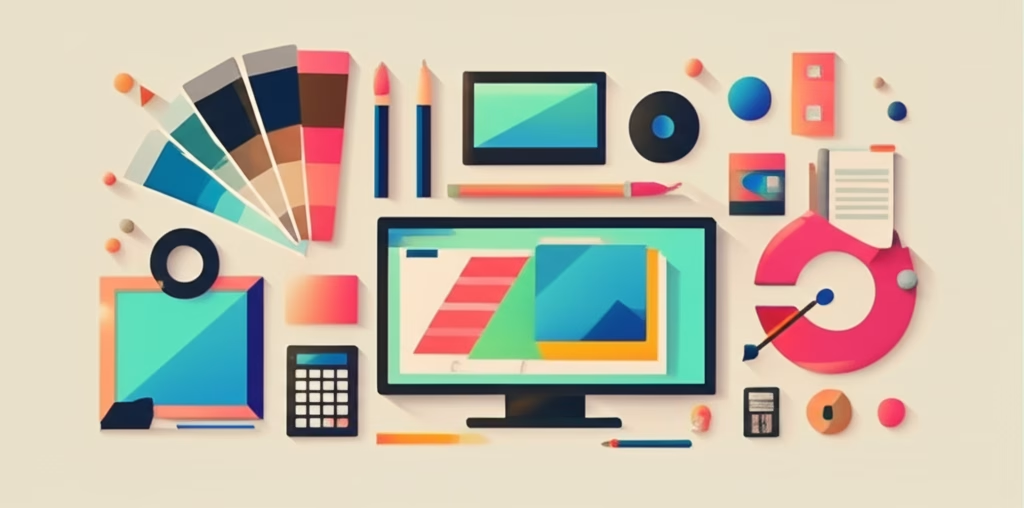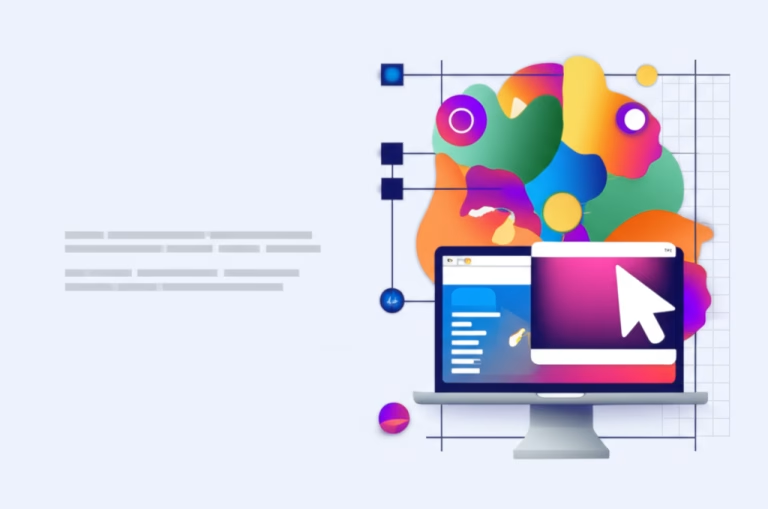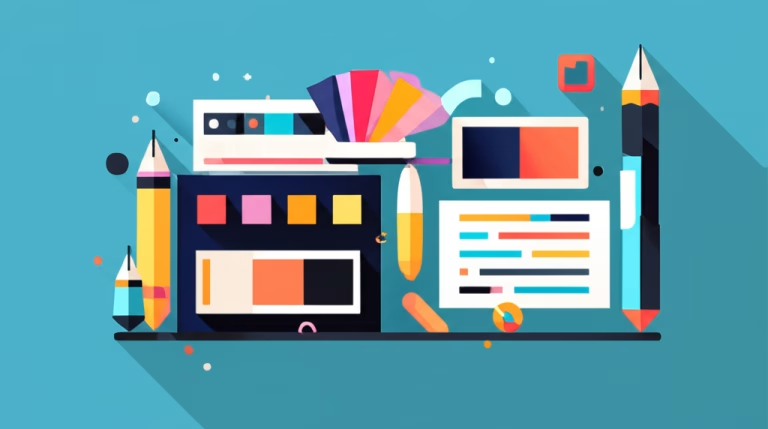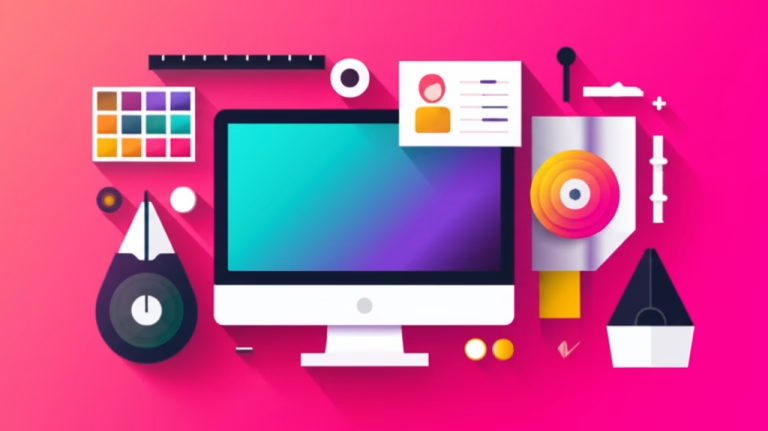Starting Your Design Journey
Feeling a bit overwhelmed when you think about learning design? You’re not alone! Many aspiring designers wonder where to begin or how to get better without feeling lost. Textbooks and tutorials are great, but nothing beats actually *doing*. Practice is the secret sauce to improving any skill, especially design. But what do you practice? This post is all about diving into simple, fun easy projects to practice design that will help you build confidence and improve your skills. We’ll walk through why practice matters, some basic ideas, and how to get started today.
Table of Contents
What are Easy Design Projects?
Easy design projects are small, manageable tasks perfect for beginners. They focus on applying fundamental design concepts without requiring complex software mastery or extensive experience. Think of them as bite-sized exercises. Instead of trying to design a whole website or a major brand identity right away, you start with something simpler. These tasks help you get comfortable with tools and principles.
These projects are designed to be completed relatively quickly, often in a few hours or a day. They offer a chance to experiment, make mistakes, and learn without the pressure of a real client or a huge time commitment. They are fantastic for building your design skills step-by-step. They let you focus on one or two elements, like color, typography, or layout, at a time.
Why is Practicing Design Important?
Practice is absolutely vital for anyone wanting to improve at design. It’s like learning a musical instrument or a sport – you can read about it all day, but you won’t get better until you actually play or participate. Consistent practice helps you internalize design principles. You start to develop an intuitive understanding of what looks good and why.
Engaging with beginner design projects regularly helps you become proficient with design software tools. The more you use programs like Adobe Illustrator, Photoshop, or even free alternatives like Canva or GIMP, the more comfortable and faster you’ll become. Practice also builds your creative muscle. It encourages experimentation and helps you find your unique design voice. Plus, these finished projects can start forming the basis of your design portfolio, which is essential for showing potential clients or employers what you can do.
Beyond just technical skills, practice helps you understand the *process* of design, from understanding a brief (even a self-made one) to iteration and refinement. It makes the abstract concepts you read about feel concrete and applicable. It’s the bridge between theory and execution, turning knowledge into ability. Each small project completed is a step forward in your journey to becoming a skilled designer.
Fundamental Principles for Easy Projects
Even simple projects use core design ideas. Focusing on these will make your work stronger.
- Layout & Composition: How elements are arranged on the page or screen. Think about balance and flow. Where do you want the viewer’s eye to go first? Use grids or simple alignment to create order.
- Color Harmony: Choosing colors that work well together. You don’t need to be a color theory expert, but learning about complementary or analogous colors can make a big difference. Simple palettes often work best for beginners.
- Typography Basics: Selecting fonts that are readable and fit the mood of your project. Learn the difference between serif and sans-serif fonts. Don’t use too many different fonts in one design; often, one or two is enough.
- Visual Hierarchy: Making certain elements stand out more than others. This guides the viewer through the information. Use size, color, or placement to emphasize key parts. What’s the most important message?
- Whitespace (Negative Space): The empty areas around and between design elements. This isn’t just blank space; it’s a crucial design element that helps organize information, improves readability, and gives your design room to breathe. Don’t be afraid of it!
Applying even one or two of these principles consciously in each project will significantly improve your results. Start small, perhaps focusing on just color and typography in one project, and layout in the next. This focused approach makes learning less daunting.
Common Mistakes Beginners Make and How to Avoid Them
Learning involves making mistakes, which is perfectly fine! Recognizing common pitfalls helps you learn faster.
- Overcomplicating the Design
How to Avoid: Start simple. Focus on one main message or visual idea. Use fewer elements, colors, and fonts. Minimalism is your friend when starting out. - Ignoring Visual Hierarchy
How to Avoid: Decide the most important element before you start designing. Use size, boldness, or placement to make it stand out. Everything else should support this main point. - Using Too Many Fonts or Colors
How to Avoid: Stick to a limited palette. For fonts, try using just one font family with different weights (like bold, regular, light) or pairing one serif with one sans-serif font. For colors, choose 2-3 main colors. - Poorly Chosen or Low-Quality Images/Graphics
How to Avoid: Use high-resolution images. Ensure any graphics or icons match the overall style. There are many great sources for free stock photos and icons online (like Unsplash, Pexels, Flatiron). - Not Getting Feedback
How to Avoid: Share your work! Ask friends, family, or online design communities for constructive criticism. Be open to suggestions; it’s how you learn and improve. - Inconsistent Alignment and Spacing
How to Avoid: Use guides, grids, and smart guides in your software. Pay attention to the space between elements. Consistency makes a design look professional and organized. - Saving Files Incorrectly
How to Avoid: Learn the right file formats for different uses (e.g., JPG for photos, PNG for transparency, PDF for print/sharing). Keep your project files organized in folders.
Don’t be discouraged if you make these mistakes. They are a normal part of the learning process. Just try to identify them and apply the solutions in your next project.
How to Apply Easy Projects to Your Practice
Ready to start designing? Here’s a simple way to incorporate easy projects to practice into your routine.
Choose a project type: Pick something small. Some ideas include:
- A simple social media graphic: (for example, for a fictional quote or event). A basic business card design for yourself or a fake person. A poster for a made-up local event (like a farmers market or concert). Redesigning a simple web banner. Creating a set of icons (even if it’s just 3-5 simple icons). Creating a simple logo for a fictional small business (like a coffee shop or bookstore). Start with what interests you the most!
- Set a Simple Goal: What do you want to achieve or learn with this project? Maybe you want to practice using the pen tool, experimenting with color palettes, or arranging text effectively. Having a specific learning goal makes the practice more focused.
- Gather Inspiration (Briefly): Look at examples of similar designs you like, but don’t copy them directly. Understand *why* they work. What colors, fonts, or layouts did they use? Use sites like Pinterest, Dribbble, or Behance for ideas. Set a time limit for inspiration gathering so you don’t get stuck here.
- Sketch or Plan (Optional but Recommended): Before you touch the software, quickly sketch out a few ideas on paper. This helps you think about layout and composition without getting bogged down in technical details. Even rough doodles are helpful.
- Design in Your Software: Now, open your chosen design tool. Start building your design based on your plan. Focus on applying the principles we discussed: layout, color, type, hierarchy, and space. Don’t aim for perfection on the first try.
- Refine and Get Feedback: Once you have a draft, step away for a bit if you can, then look at it with fresh eyes. Tweak and improve based on your initial goal and design principles. Share it with someone for feedback. Ask specific questions like “Is the main message clear?” or “Do these colors work together?”
- Finish and Save: Complete the design based on feedback and your own review. Save it in the appropriate format. Keep your finished projects organized – they are proof of your progress and potential portfolio building pieces.
Repeat this process regularly. Try different types of projects to broaden your skills. The key is consistency, not perfection. Each completed project is a valuable learning experience, contributing to your overall growth as a designer.
Frequently Asked Questions (FAQ) about Design Practice
Q: How often should I practice design?
A: Consistency is key. Aim for a little bit regularly, even if it’s just 30 minutes a few times a week, rather than one long session infrequently.
Q: Do I need expensive software to practice?
A: No, absolutely not! There are many excellent free tools available like Canva, GIMP, Inkscape, and Figma that are perfect for beginners and simple projects.
Q: What if my practice projects don’t look good?
A: That’s completely normal! The goal of practice isn’t perfection, it’s learning and improvement. Analyze what you don’t like and try to do it differently next time. Every project teaches you something.
Q: Can these easy projects help me build a portfolio?
A: Yes! Even simple, well-executed practice projects can demonstrate your skills and understanding of design principles. Choose your best ones to showcase your abilities.
Keep Designing, Keep Growing
You’ve learned that practice is fundamental to improving your design skills. We’ve explored what easy projects are, why they’re important, key principles to use, and how to avoid common errors. You now have a clear, actionable process for tackling your own beginner design projects. Remember, every design you create, no matter how small, is a step forward. Don’t wait for the perfect project; start with the easy ones today. Embrace the learning process, be patient with yourself, and enjoy the journey of creating.



